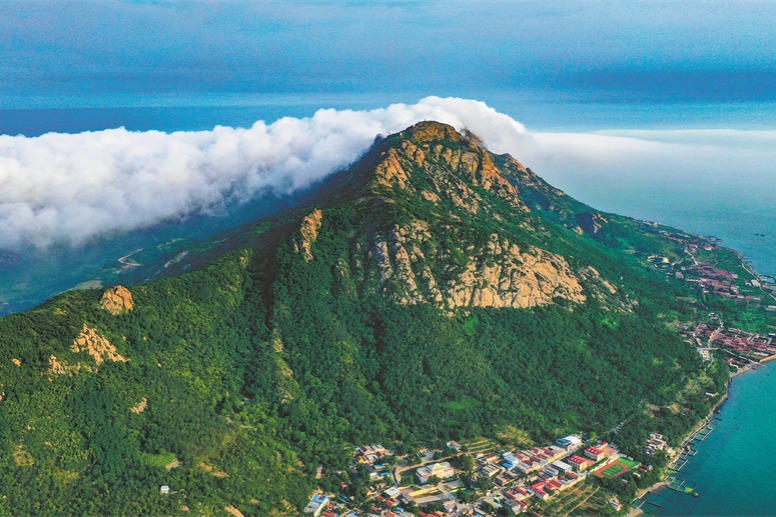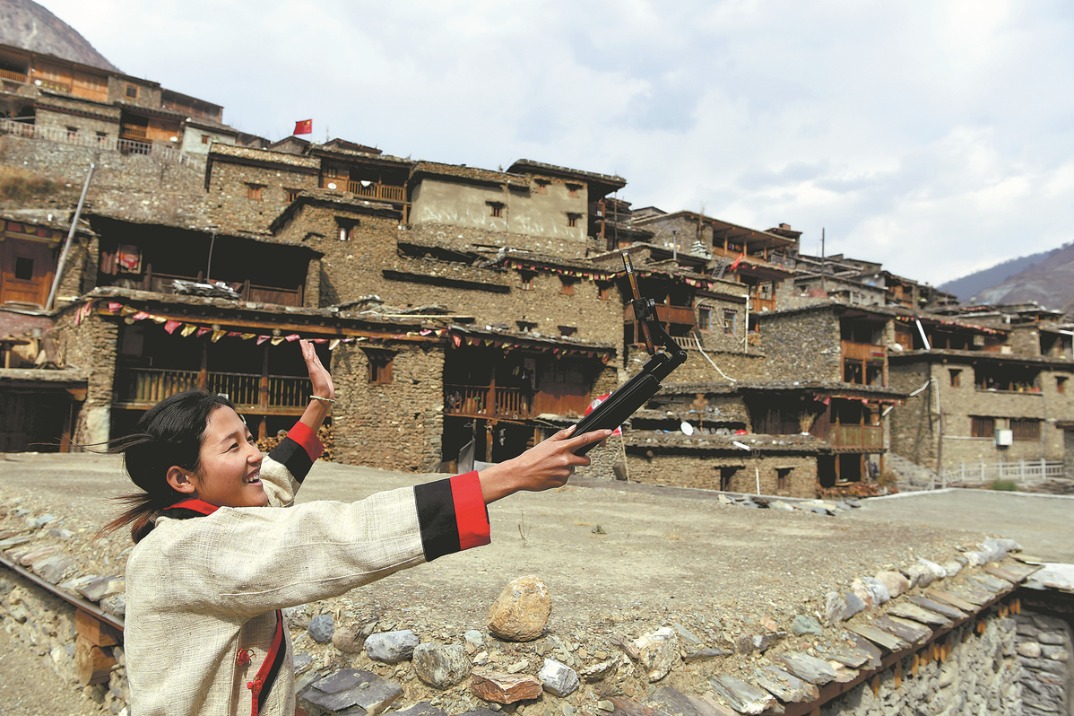Deputy learns lessons from close encounters with weather disasters


After studying severe convective weather for years, Zheng Yongguang still has a sense of powerlessness when confronting such disasters.
Zheng, 50, chief technical engineer at the National Meteorological Center's severe weather prediction center, conducted a field survey after a deadly tornado hit Funing county in Yancheng, Jiangsu province on June 23, 2016.The EF4 tornado, the second most powerful on the six-tier Enhanced Fujita intensity scale, was the strongest to have struck China.
He said he saw rows of houses ravaged by the tornado and encountered a grief-stricken villager, whose granddaughter died when a prefabricated cement board fell from the roof while she was seeking shelter at home.
"This experience left me feeling utterly powerless," said Zheng, who is a National People's Congress deputy.
"It underscored the pressing need to enhance the capacity to predict disasters induced by severe convective weather, so that the public could be provided with ample time to take preventive measures upon receiving early warning information."
After earning his doctoral degree in atmospheric science at Peking University in 2002, Zheng taught at the university. Three years later, he went to the NMC, where he has focused on forecasting severe convective weather. He witnessed the founding of the severe weather prediction center in 2009 and now serves as its chief technical engineer.
"China boasts the most diverse range of severe convective weather phenomena in the world, such as short-term heavy rainfall, downbursts, tornadoes and large hail," he said. "These weather events, marked by their small-scale and short-lived nature, abrupt onset, swift development and high intensity, represent highly destructive weather occurrences.
"Monitoring and forecasting such weather have consistently stood as a pivotal and demanding task of international meteorological forecasting endeavors."
Zheng said that discovering the mechanism behind such weather phenomena involves solving nonlinear equations, "which are quite complex".
"While basic formulas are used to predict the atmospheric variables, the influence of small-scale occurrences and geographic features can complicate the relationships and make them less predictable," he said.
Despite the challenges, China has made remarkable progress in research on the formation, characteristics and prediction of severe convective weather.
A collaborative project between the NMC and Tsinghua University created a nowcasting model for extreme precipitation, Nowcast-Net, last year. Nowcasting is the detailed analysis and description of the current weather to create forecasts for a period of up to six hours, and the model unifies physical-equation schemes and deep-learning methods to predict heavy rainfall with higher resolution and more detailed local information.
"With meteorological experts standing by in the design, evaluation and interpretation process, the deep-learning ability has great potential in extreme weather forecasting," Zheng said.
In addition, the NMC has broadened its monitoring system, integrating observations from radar, meteorological satellites and automatic weather stations.
Several advances have helped to predict major disasters. In July 2022, the accurate prediction of tornadoes in Lianyungang, Jiangsu, resulted in a successful reduction of disaster impact, preventing major losses. They were also used to guarantee the smooth operation of major events, such as the 24th Olympic Winter Games in Beijing in 2022 and the 19th Asian Games in Hangzhou, Zhejiang's provincial capital, last year.
Zheng said China is spearheading technological innovation, citing Pangu-Weather, a three-dimensional high-resolution model for medium-range global weather forecasting that is more than 10,000 times faster than the world's best numerical weather prediction.
However, he also pointed out disparities in fundamental research ability and gaps in data collection between China and some developed countries because of the delayed commencement of research.
Zheng said he had found the occurrence of severe convective weather processes to be relatively stable over the years, but they have resulted in more serious local disasters.
The 2023 China Climate Bulletin said China experienced 33 regional severe convective weather processes last year, compared with the five-year average of 36 a year. Nineteen tornadoes of moderate or higher intensity were recorded, compared with the three-year average of 13.3 a year.
When record-breaking rainfall hit the Beijing-Hebei-Tianjin region in July, Zheng went to the Mentougou district of Beijing and Xingtai in Hebei province to conduct field surveys.
"Upon our arrival in Mentougou, we found the floodwaters to be two to three meters deep," he said. "Residents told us that warnings about heavy rainfall and flooding had been broadcast via loudspeakers several days earlier, so most villagers were able to evacuate with government assistance. However, some villagers refused to leave for different reasons, and there were more than 30 casualties."
Zheng said that despite good forecasting, there were still deficiencies, such as the accuracy and lead time of forecasting, the efficiency of informing the public and the implementation of evacuations.
"The tragic scene highlighted the necessity for persistent enhancement of monitoring and early warning capabilities for small and meso-scale weather-related disasters to serve the health and well-being of the public," he said.
As an NPC deputy, his motion this year calls for a collaborative effort by various authorities to improve the country's meteorological detection capabilities and encourage public participation.
He said there are some observational blind spots between high-altitude radar and ground-level weather stations, which stops weather forecasters from observing some small-scale weather phenomena. Considering the limitations of existing technology, in addition to more investment in technological innovation, Zheng also proposed leveraging the observational resources of the general public.
Zheng proposed the establishment of a social volunteer reporting system to enlarge the meteorological database for further study. That would involve encouraging the public to report unusual weather phenomena while imposing restrictions on fake information.
"Extreme convective weather is an unsolved mystery, and I will devote the rest of my life to unlocking the puzzle," he said.
Peng Chengcheng contributed to this story.





































